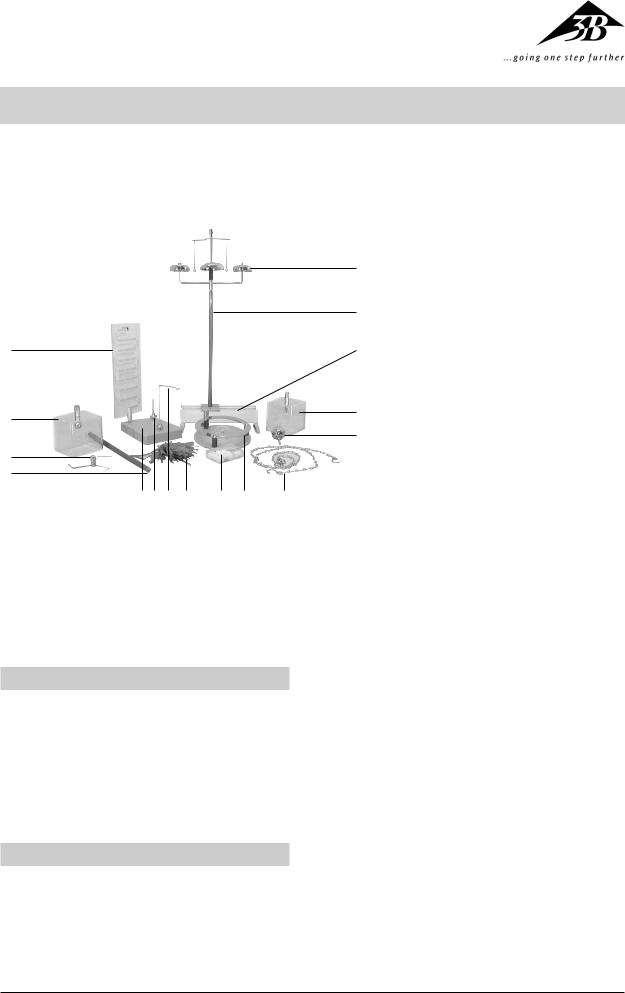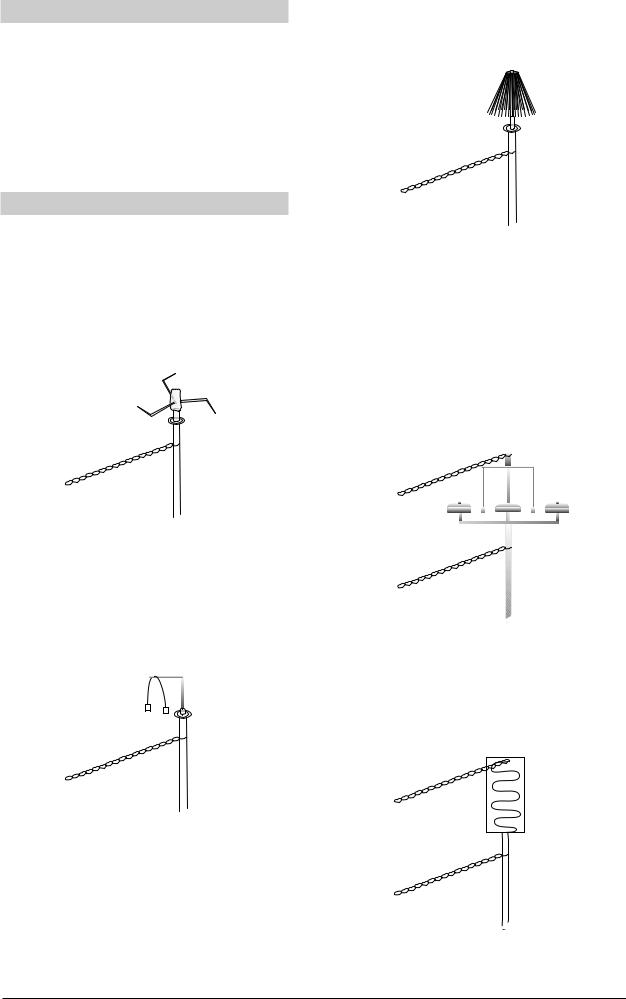3B Scientific Electrostatic Equipment Set User Manual

3B SCIENTIFIC® PHYSICS |
® |
|
Electrostatic equipment set U8491500
Instruction sheet
11/07 ALF
br
bq
1 |
bp |
bo
2
bn
3
4
5678 9 bl bm
This equipment set can be used in conjunction with an electrostatic generator such as a Wimshurst machine (e.g. U15310) or a Van der Graaf generator (e.g. U15300) to perform a wide variety of experiments investigating electrostatic phenomena including some historic experiments.
1.Safety instructions
•Discharge experimental equipment before touching.
•Discharge Wimshurst machine and Van der Graaf generator before touching.
•When using a Van der Graaf generator, attach the ground terminal to ground.
•Perform experiments only with high-voltage equipment whose short-circuit current is less than 15 .
2.Description, technical data
The experiment components are equipped with 4-mm connector pins so that they may be quickly mounted on or removed from an insulated stand. Connection chains are included for connecting sources of charge,
but experiment leads with 4 mm plugs can also be used. We recommend using the Wimshurst machine U15310 as the source of charge for these experiments.
2.1 Scope of delivery (see illustration)
1 Luminous pane
2 Box with spherical electrode
3 Triskelion wheel
4 Friction rod, plastic with 4 mm plug
5 Storage stands
6 Needle bearing with connector pin
7 Hook stand for elder pith double pendulum
8 Bundle of tissue paper strips on rod
9 Pieces of elder pith (10 in a box)
bl Base plate on connecting pin with rolling sphere race
bm Connection chains (2 each)
bn Conductor sphere 30 mm Ø, with connector pin bo Box with pointed electrode
bp Stand base
bq Stand rod, insulated with retaining and connecting socket
br Bell chimes
4

3.Instructions for use
•The equipment only produces satisfactory experimental results if kept clean and dry.
•Discharge experiment components before use.
•When the weather is damp, it is advisable to use a fan.
•Assemble the experiments on the stand and connect to the Wimshurst machine or Van der Graaf generator with connection chains.
•Observe safety advice.
4.Example experiments
4.1 Discharge from points (Fig.1)
•Place the triskelion wheel (3) on the needle bearing attached to the stand. Connect to the source of charge to charge up the wheel.
•The triskelion wheel starts to turn because a jet of charge flows rapidly out of the points and propels the wheel.
•Increasing the charge causes the wheel to spin more quickly.
(Fig. 1)
•The bundle of tissue paper is also a simple electroscope.
(Fig. 3)
4.4 Bell chimes (Fig.4)
•Attach the bell chimes (16) to the stand, connect to the source of charge and gradually increase the charge until the hammers strike the bells.
•Be careful. Excessive charge can cause sparks between the mountings.
•The supply of charge causes the hammers to charge up and be attracted or repelled by the bells.
•When the hammers touch the bells, they discharge and swing back. The process starts again when they are loaded with the opposite charge.
4.2 Double pendulum (Fig.2)
•A double pendulum made of elder pith (7) is attached to the hook stand. Connect to the source of charge to charge up the pendulum.
•Since the pieces of elder pith assume the same charge, they repel one another.
•The double pendulum is a simple electroscope.
(Fig. 2)
4.3 Bundle of tissue paper (Fig.3)
•Attach the bundle of tissue paper (8) to the stand, connect to the source of charge and gradually increase the charge.
•The strips of paper all repel one another and spread out to all sides to look like an umbrella frame.
(Fig. 4)
4.5 Luminous pane (Fig.5)
•Attach the luminous plane (1) to the stand, connect to the source of charge and gradually increase the charge.
•When the voltage is large sparks cross the spaces between the conductors of the pane.
(Fig. 5)
5
